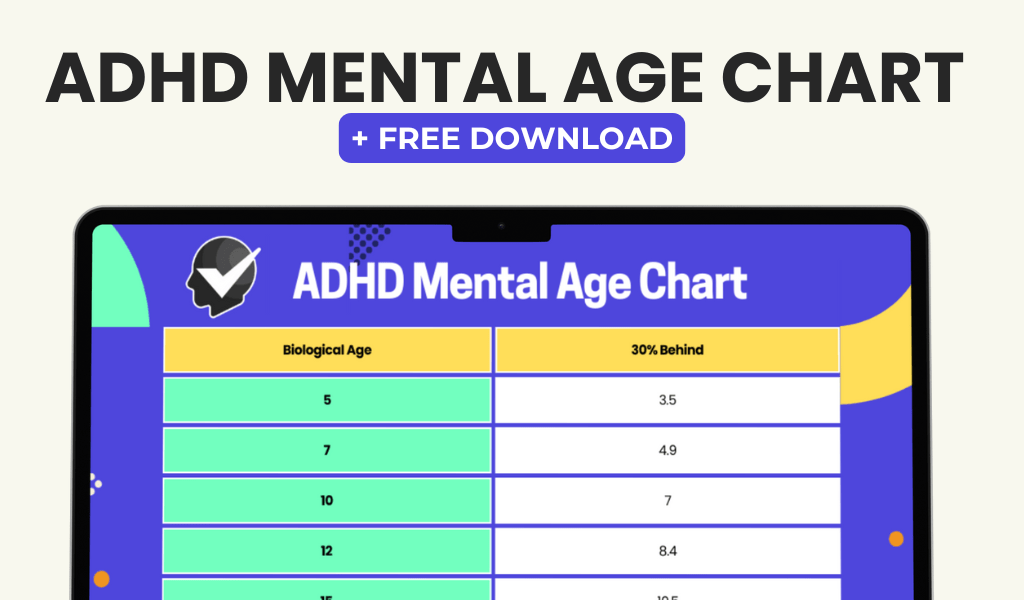ADHD, or Attention Deficit Hyperactivity Disorder, is a neurodevelopmental disorder that affects both children and adults. It is characterized by symptoms such as inattention, hyperactivity, and impulsivity. As a teacher, it is important to have a good understanding of ADHD in order to effectively support students with this condition. ADHD can present itself in various ways, and it is crucial to recognize that not all students with ADHD will exhibit the same symptoms. Some may struggle with paying attention and staying focused, while others may have difficulty sitting still and controlling their impulses. Understanding the different ways in which ADHD can manifest is essential for creating a supportive and inclusive classroom environment.
In addition to understanding the symptoms of ADHD, it is important for teachers to be aware of the potential impact that this condition can have on a student’s academic performance and social interactions. Students with ADHD may struggle with organization, time management, and completing tasks. They may also experience challenges in regulating their emotions and behavior, which can affect their relationships with peers and authority figures. By having a comprehensive understanding of ADHD, teachers can better support their students and create an environment that promotes their academic and social success.
Key Takeaways
- ADHD is a neurodevelopmental disorder that affects a student’s ability to focus, control impulses, and regulate energy levels.
- Symptoms of ADHD in the classroom may include inattention, hyperactivity, and impulsivity, which can impact a student’s academic performance and behavior.
- Utilizing an ADHD planner can help students with ADHD manage their time, assignments, and responsibilities in the classroom.
- Testing and assessment for ADHD is important for identifying the specific needs of students and developing appropriate interventions and support.
- Implementing strategies from the ADHD workbook can help students with ADHD develop skills in organization, time management, and self-regulation in the classroom.
- Collaboration with parents and healthcare professionals is essential for creating a supportive and consistent environment for students with ADHD.
- Supporting students with ADHD in the classroom requires understanding their individual needs, providing accommodations, and fostering a positive and inclusive learning environment.
Recognizing ADHD Symptoms in the Classroom
Recognizing ADHD symptoms in the classroom is crucial for providing appropriate support to students with this condition. Some common symptoms of ADHD include difficulty paying attention, being easily distracted, forgetfulness, impulsivity, and hyperactivity. In the classroom, these symptoms may manifest as a student having trouble staying focused during lessons, being unable to follow instructions, fidgeting or squirming in their seat, and interrupting others during class discussions. It is important for teachers to be observant and attentive to these behaviors in order to identify students who may be struggling with ADHD.
It is also important to recognize that ADHD symptoms can vary from student to student. While some students may exhibit more obvious signs of hyperactivity and impulsivity, others may primarily struggle with inattention. By being aware of the different ways in which ADHD can present itself, teachers can better understand the needs of their students and provide targeted support. Additionally, it is important to approach the recognition of ADHD symptoms with empathy and understanding, as students with this condition may face challenges that are not immediately apparent to others.
Utilizing the ADHD Planner for Effective Classroom Management
One effective tool for managing ADHD in the classroom is the use of an ADHD planner. This tool can help students with ADHD stay organized, manage their time effectively, and keep track of their assignments and responsibilities. By utilizing an ADHD Planner, teachers can support their students in developing important executive functioning skills that are often impacted by ADHD. This can help students with ADHD feel more in control of their academic responsibilities and reduce feelings of overwhelm and anxiety.
In addition to helping students stay organized, an ADHD planner can also serve as a communication tool between teachers, students, and parents. Teachers can use the planner to provide students with clear instructions and expectations for assignments and deadlines. Parents can also use the planner to support their child’s organization and time management skills at home. By utilizing the ADHD planner as a collaborative tool, teachers can create a supportive network that helps students with ADHD thrive academically.
The Importance of ADHD Testing and Assessment
| Importance of ADHD Testing and Assessment |
|---|
| 1. Early identification of ADHD |
| 2. Tailored treatment plans |
| 3. Improved academic performance |
| 4. Better social and emotional functioning |
| 5. Enhanced quality of life |
The importance of ADHD testing and assessment cannot be overstated when it comes to supporting students with this condition. Proper testing and assessment are essential for accurately diagnosing ADHD and developing an appropriate intervention plan. It is important for teachers to recognize that they are not qualified to diagnose ADHD themselves, and that a comprehensive assessment by a qualified healthcare professional is necessary. By advocating for proper testing and assessment, teachers can ensure that their students receive the support and accommodations they need to succeed in the classroom.
In addition to diagnosing ADHD, testing and assessment can also help identify any co-occurring conditions that may be impacting a student’s academic performance and behavior. This can include conditions such as learning disabilities, anxiety, or depression. By identifying these co-occurring conditions, teachers can work with parents and healthcare professionals to develop a comprehensive support plan that addresses all of the student’s needs. Overall, proper testing and assessment are essential for understanding the unique needs of each student with ADHD and providing them with the appropriate support.
Implementing Strategies from the ADHD Workbook
Another valuable resource for supporting students with ADHD in the classroom is the ADHD workbook. This resource provides teachers with a variety of strategies and interventions that can be implemented to support students with ADHD. These strategies may include techniques for improving attention and focus, managing impulsivity, and promoting organization and time management skills. By implementing strategies from the ADHD workbook, teachers can create a supportive learning environment that meets the diverse needs of their students.
In addition to providing practical strategies, the ADHD workbook can also serve as a valuable resource for educating teachers about the specific challenges that students with ADHD may face. This can help teachers develop a deeper understanding of their students’ needs and provide more targeted support. By incorporating strategies from the ADHD workbook into their teaching practices, teachers can create an inclusive classroom environment where all students have the opportunity to succeed.
Collaborating with Parents and Healthcare Professionals

Collaborating with parents and healthcare professionals is essential for supporting students with ADHD in the classroom. Parents play a crucial role in their child’s academic success, and it is important for teachers to maintain open lines of communication with them. By working collaboratively with parents, teachers can gain valuable insights into their students’ strengths, challenges, and individual needs. This can help teachers tailor their approach to instruction and support to better meet the needs of students with ADHD.
In addition to collaborating with parents, it is also important for teachers to work closely with healthcare professionals who are involved in supporting students with ADHD. This may include psychologists, psychiatrists, or other mental health professionals. By working together with healthcare professionals, teachers can gain a deeper understanding of their students’ diagnoses and treatment plans. This collaboration can also help ensure that students receive consistent support both at school and at home.
Supporting Students with ADHD in the Classroom
Supporting students with ADHD in the classroom requires a multifaceted approach that addresses their academic, social, and emotional needs. In addition to implementing specific strategies for managing ADHD symptoms, it is important for teachers to create a supportive and inclusive classroom environment where all students feel valued and understood. This may include providing clear expectations and routines, offering frequent breaks during lessons, and providing opportunities for movement and physical activity.
It is also important for teachers to provide positive reinforcement and encouragement to students with ADHD. Recognizing their efforts and achievements can help boost their self-esteem and motivation. Additionally, providing opportunities for students to develop their strengths and interests can help them build confidence and resilience.
In conclusion, supporting students with ADHD in the classroom requires a comprehensive understanding of this condition and a commitment to providing targeted support. By recognizing ADHD symptoms, utilizing effective tools such as the ADHD planner, advocating for proper testing and assessment, implementing strategies from the ADHD workbook, collaborating with parents and healthcare professionals, and creating a supportive classroom environment, teachers can help students with ADHD thrive academically and socially. With empathy, understanding, and targeted support, students with ADHD can reach their full potential in the classroom.
If you’re interested in learning more about ADHD assessments for teachers, you may want to check out this article on adhd-testing.com. This website offers valuable information on the importance of ADHD assessments in the classroom and how teachers can effectively identify and support students with ADHD. It’s a great resource for educators looking to improve their understanding of ADHD and its impact on learning.
FAQs
What is the Vanderbilt ADHD assessment for teachers?
The Vanderbilt ADHD assessment for teachers is a tool used to gather information from teachers about a child’s behavior in the classroom that may be indicative of attention-deficit/hyperactivity disorder (ADHD).
How is the Vanderbilt ADHD assessment for teachers conducted?
The assessment typically involves teachers completing a questionnaire that asks about the child’s behavior, attention, and hyperactivity in the classroom setting.
What kind of information does the Vanderbilt ADHD assessment for teachers gather?
The assessment gathers information about the child’s behavior, attention span, ability to stay on task, impulsivity, and hyperactivity as observed by the teacher in the classroom.
Why is the Vanderbilt ADHD assessment for teachers important?
The assessment is important because it provides valuable information from a different perspective (the teacher) about the child’s behavior, which can help in the diagnosis and treatment of ADHD.
Who can request a Vanderbilt ADHD assessment for teachers?
Parents, caregivers, or healthcare professionals can request a Vanderbilt ADHD assessment for teachers to gather information about a child’s behavior in the classroom.














